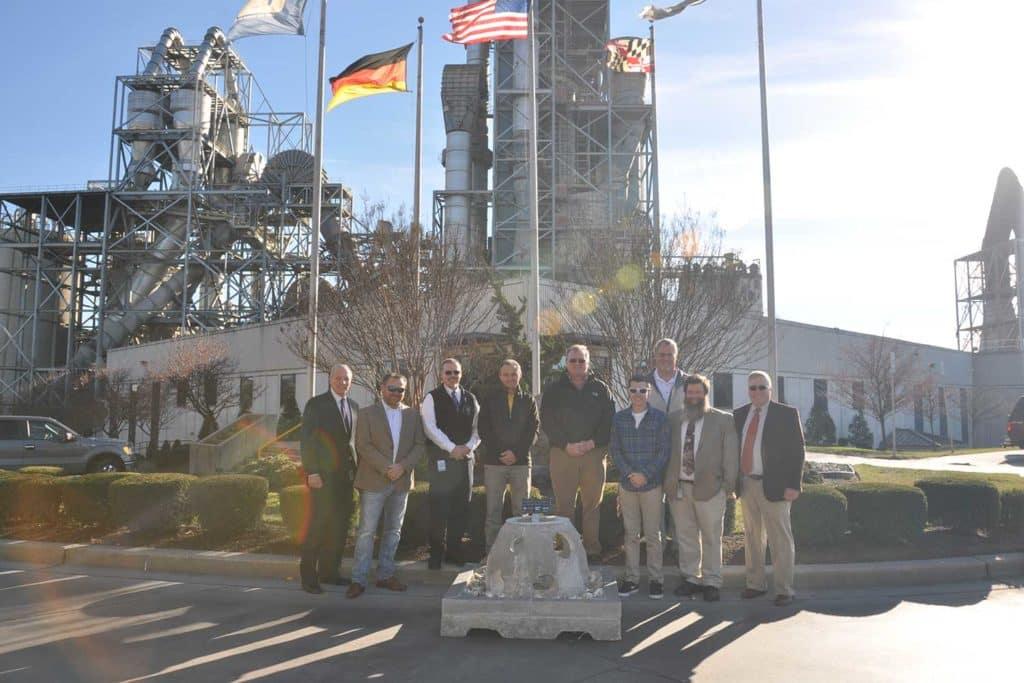UNION BRIDGE, MARYLAND — The Coastal Conservation Association Maryland (CCA Maryland), CCA’s national habitat program the Building Conservation Trust (BCT) and Carroll County Public Schools (CCPS) recognized the efforts of Lehigh Cement Company for its collaborative effort to help restore, preserve and protect the Chesapeake Bay’s population of eastern oysters and their reefs. Lehigh supports an ongoing community project called the Living Reef Action Campaign (LRAC), which is a marine habitat project located in Central Maryland.
The LRAC focuses on rebuilding the Chesapeake’s oyster populations and three dimension reefs, while engaging hundreds of school students through restoration-based STEM educational programs as the foundation for restoring the Chesapeake marine estuary. Leaders and school administrators presented Lehigh Cement Company officials with a monument memorializing the LRAC’s first student-built reef ball. Students ranging from fourth through 12th grade have constructed more than 300 concrete reef balls since the project was founded in March 2015.
“The Lehigh Cement Company is proud to support CCA’s Living Reef Action Campaign,” said Kent Martin, plant manager of the Union Bridge facility. “The Chesapeake Bay is a recreational treasure, and its restoration will continue as a result of this project. We are proud our product can play a role in a powerful community effort with significant environmental benefits.”

Rick Elyar, CCA Maryland’s habitat committee chairman, explained, “Reef balls are artificial reef modules placed in the ocean and estuaries to form new reef habitat. Tidal currents flowing through holes in the reef balls create whirlpools, which nourish oysters and other marine life.”
Lehigh’s cement creates strong, abrasion-resistant, marine eco-friendly concrete that allows for settlement and growth of oysters and many species of marine life.
“Three dimensional reefs are home to oysters, one of the most diverse and threatened ecosystems in the Chesapeake Bay,” said Sean Stone, executive director of BCT. “Lehigh’s support for these efforts helps create and restore needed habitats, while providing opportunities to educate our coastal communities about the benefit of restoration for current and future generations.”
Throughout this project, partners have collaborated with a number of stakeholders, including: Chesapeake Bay Foundation; Maryland Artificial Reef Initiative; Stevenson University; the Reef Ball Foundation; state and local officials; and recreational anglers. They want to achieve two main objectives: enhance survival by restoring the three dimensional reef structures for which juvenile oysters can attach, grow and live on or above the floor of the bay; and maintain the ecology of the bay by sustaining oysters that would otherwise be struggling to repopulate by natural processes.
“We are excited that our students have had this wonderful opportunity and we greatly value our partnership with Lehigh and the other organizations involved in this endeavor,” said Stephen Guthrie, superintendent of Carroll County Public Schools. “Not only has this project been an outstanding learning experience for our students, but it has instilled in them the importance of protecting and preserving our precious environment and natural resources.”
For more information about CCA Maryland’s habitat work in the Chesapeake Bay, contact Rick Elyar at relyar@ccamd.org or see the organization’s habitat website as well as the website for its national habitat program, BCT.








